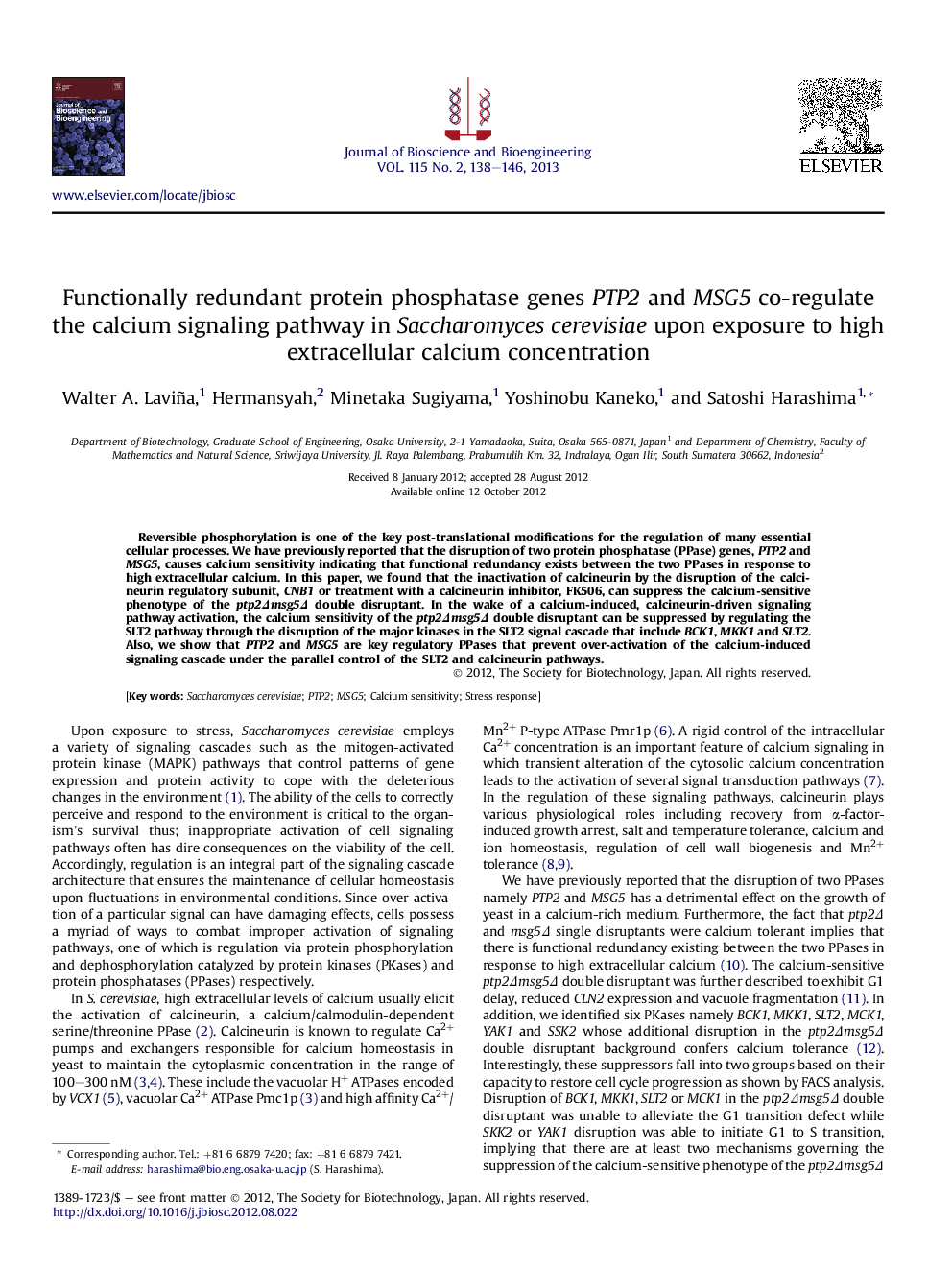| Article ID | Journal | Published Year | Pages | File Type |
|---|---|---|---|---|
| 20826 | Journal of Bioscience and Bioengineering | 2013 | 9 Pages |
Reversible phosphorylation is one of the key post-translational modifications for the regulation of many essential cellular processes. We have previously reported that the disruption of two protein phosphatase (PPase) genes, PTP2 and MSG5, causes calcium sensitivity indicating that functional redundancy exists between the two PPases in response to high extracellular calcium. In this paper, we found that the inactivation of calcineurin by the disruption of the calcineurin regulatory subunit, CNB1 or treatment with a calcineurin inhibitor, FK506, can suppress the calcium-sensitive phenotype of the ptp2Δmsg5Δ double disruptant. In the wake of a calcium-induced, calcineurin-driven signaling pathway activation, the calcium sensitivity of the ptp2Δmsg5Δ double disruptant can be suppressed by regulating the SLT2 pathway through the disruption of the major kinases in the SLT2 signal cascade that include BCK1, MKK1 and SLT2. Also, we show that PTP2 and MSG5 are key regulatory PPases that prevent over-activation of the calcium-induced signaling cascade under the parallel control of the SLT2 and calcineurin pathways.
